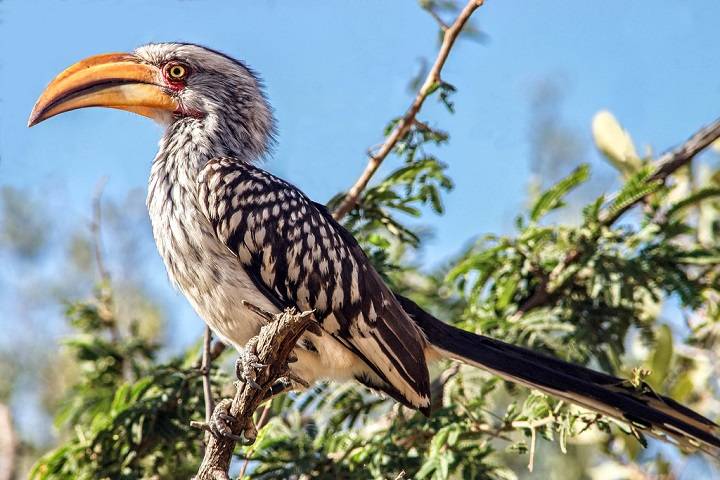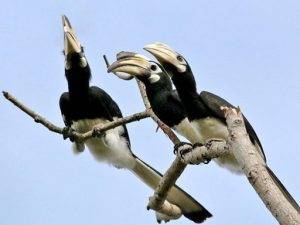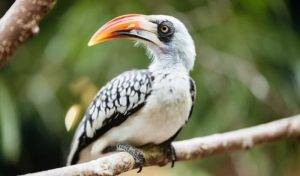When we think of iconic and beloved Disney movies, “The Lion King” often comes to mind. This timeless classic is not only known for its memorable characters and stunning animation but also for its portrayal of the African savannah and its rich wildlife. Among the many intriguing creatures featured in the film, one bird stands out—the hornbill.
In this comprehensive guide, we will embark on a journey to explore the fascinating world of the lion king bird, better known as the hornbill.
The Hornbill Family
Before we dive into the specifics of the hornbill in “The Lion King,” let’s get to know this avian family a bit better. Hornbills are a group of birds belonging to the Bucerotidae family, and they are renowned for their distinctive appearance and unique behaviors. Here are some key characteristics of hornbills:
- Striking Appearance: Hornbills are known for their striking appearance, characterized by large, colorful bills with a casque (a hollow structure on the upper bill) in some species. Their plumage varies in color, with shades of black, white, brown, and vibrant hues.
- Range: Hornbills are found in tropical and subtropical regions of Africa, Asia, and the islands of the Indian Ocean. They inhabit various types of forests, from rainforests to savannahs.
- Diet: These birds have omnivorous diets, consisting of fruits, insects, small animals, and even the occasional reptile. They are important seed dispersers for many plants.
- Unique Behavior: Hornbills exhibit fascinating behaviors, such as sealing themselves inside tree cavities during the breeding season, where they rely on a small opening to receive food from their mate and later emerge with their chicks.
The Lion King Bird: Zazu
In “The Lion King,” Zazu is the loyal hornbill advisor to Mufasa, the king of the Pride Lands. Zazu is a red-billed hornbill, a species native to Africa, and his character adds a delightful touch of humor and wisdom to the film. Let’s take a closer look at Zazu and some interesting facts about hornbills in the wild:
Conservation Status: While Zazu is a fictional character, real hornbill species, including the red-billed hornbill, face various conservation challenges. Deforestation, habitat loss, and hunting pose threats to hornbill populations in their native habitats. Additionally, the illegal pet trade contributes to the decline of some hornbill species, as they are often captured and sold as exotic pets. Conservation efforts focus on habitat preservation, anti-poaching measures, and raising awareness about the importance of protecting these iconic birds.
Vocal Abilities: Hornbills are known for their diverse vocalizations, which range from loud honks to melodious songs. These vocalizations serve various purposes, including communication between mates, signaling territorial boundaries, and warning of potential threats. Some hornbill species engage in duets with their mates, producing intricate vocal performances that strengthen their bond and reinforce their territory.
Unique Nesting Behavior: Hornbills exhibit a distinctive nesting behavior known as “cavity nesting.” They often select tree cavities, natural hollows, or holes in cliffs as nest sites. The female seals herself inside the chosen nesting site using a mixture of mud, saliva, and feces, leaving only a small slit for receiving food from the male. This behavior helps protect the female and the chicks from predators such as snakes and monkeys. It also provides a secure environment for incubating eggs and raising offspring.
Seed Dispersers: Hornbills play a vital role in forest ecosystems as seed dispersers. They consume a variety of fruits, berries, and seeds, digesting the fleshy parts and regurgitating or excreting the seeds intact. By dispersing seeds in different locations, hornbills contribute to the regeneration and diversity of plant species within their habitats. Their foraging behavior helps maintain healthy ecosystems and supports the survival of numerous plant species.
Casque Function: The casque, a hollow structure located on the upper bill of some hornbill species, serves multiple functions. While its exact purpose is not fully understood, researchers propose several hypotheses. The casque may play a role in amplifying vocalizations, enhancing the bird’s resonance and projection during calls. Additionally, it could aid in regulating body temperature by dissipating excess heat, especially in hot and humid climates. Furthermore, the casque may provide protection during aerial collisions or combat with rivals, acting as a shock absorber and reducing the risk of injury to the bird’s head. Further research is needed to fully elucidate the role of the casque in hornbill biology and behavior.
The Circle of Life: Hornbills in Ecosystems
Much like the Lion King’s portrayal of the circle of life, hornbills play vital roles in the ecosystems they inhabit. Here are some ways in which hornbills contribute to the balance of nature:
Conservation Challenges
Despite their vital roles in ecosystems, hornbill species face numerous challenges that threaten their survival. Conservation efforts are essential to protect these remarkable birds and their habitats:
- Habitat Loss: Deforestation, logging, and habitat conversion for agriculture have led to the destruction of hornbill habitats. Protecting and restoring these habitats is critical for their survival.
- Hunting and Trade: Hornbills are hunted for their meat, casques, and feathers in some regions. Additionally, they are often traded in the illegal wildlife market. Strict enforcement of laws against hunting and trade is necessary to combat these threats.
- Climate Change: Climate change can disrupt the delicate balance of ecosystems, affecting the availability of food and suitable habitats for hornbills. Conservation efforts should take into account the changing climate to ensure the birds’ long-term survival.
- Awareness and Education: Raising awareness about the importance of hornbills and their conservation is vital. Education and community involvement can help reduce hunting and habitat destruction.
Related Post:
Unraveling the Complex World of Aggressive Male Duck Behavior
Deciphering the Ideal Space Requirements for Ducks
Unveiling the Mysterious Egg-Laying Habits of Ducks
The lion kingbird, as exemplified by Zazu in “The Lion King,” offers us a glimpse into the captivating world of hornbills. These birds are not only intriguing characters in the film but also fascinating creatures in their own right, with unique behaviors, vital ecological roles, and diverse species that inhabit various corners of the globe.
As we celebrate the circle of life depicted in “The Lion King,” let us also recognize the importance of conserving hornbill species and the ecosystems they call home. Through awareness, conservation efforts, and responsible stewardship of the environment, we can ensure that the lion king bird and its fellow inhabitants of the natural world continue to thrive for generations to come.




